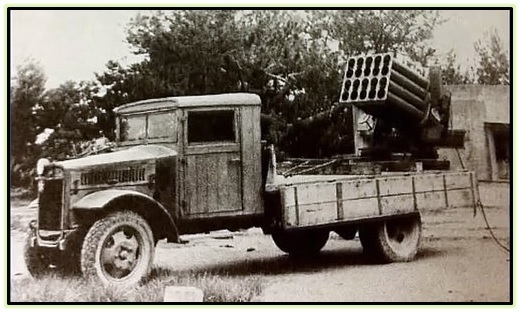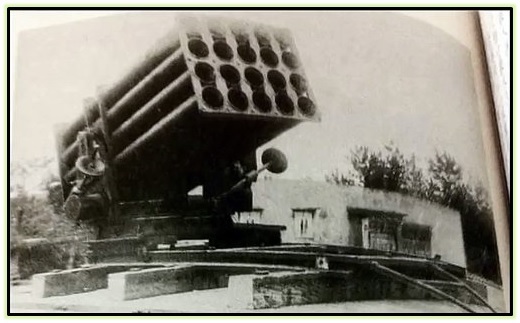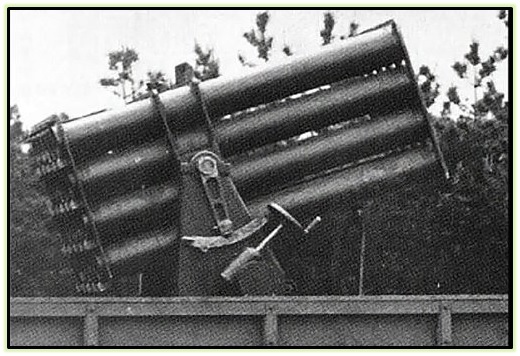in 1944 they tested a completely sensible MLRS, which is attributed as “Shisei 15.cm Tarenso”

30.4 kg 150 mm shells flew only 4200 meters. Well, by the standards of the battles for the islands, it may be normal, but nothing more. In principle, this is the range of even mortars from the enemy’s front line, one option: shoot back and hit the gas “before it starts”

the installation was tested in a self-propelled version from the very beginning. However, if you look at the fastening details, you will see that the MLRS is installed directly into a regular body on a frame that distributes the weight over the body. Apparently, installing and removing it is not a difficult matter

In principle, the solution is quite reasonable and workable. But then the incomprehensible begins. More precisely, it all ends in these photos. The “normal MLRS” never entered service

the “Shisei 15cm Tarenso Rocket Launcher” or 試製十五糎多連装噴進砲, this prototype featured a 20-barreled rocket launcher on the back of a Toyota KC truck.
While Japan developed a few rocket artillery during World War II, the developmental history of the 15cm rockets isn’t quite clear. The first prototype rocket launcher was built towards the end of 1944, with blueprints being sent from the Army’s 1st Technical Research Institute 2nd Department to the Osaka Army Arsenal’s 1st Department. The rocket launcher weren’t specifically designed to be used on the KC truck as seen above, but rather it was meant to be capable of being mounted on a variety of chassis. However, Japan’s extremely weakened industry meant that it was only ever tested on the Toyota KC.
Each of the 20 rockets weighed 30.4 kilograms. While they had a considerable explosive mass of 5.2 kilograms, they were also extremely slow with a muzzle velocity of just 190 m/s and had a relatively low range of just 4.2 kilometers - by comparison, the German 15 cm Nebelwerfer 41 went 342 m/s and a range of 6.9 kilometers. These rockets were spin-stabilized, similar to Japan’s other rockets. Aiming was done from a seat on the left of the gun mount, and the rockets were launched from a remote control. The rocket launcher could be rotated 360 degrees.
Rocket weight: 30.4 kg
Explosive mass: 5.2 kg
Explosive type: ??? (probably cast TNT)
Muzzle velocity: 190 m/s
Range: 4.2 km
Firing angles: 360°
Gun Elevation/Depression: ???
The truck that the rocket launcher was mounted on was the Toyota model KC. This truck, developed off of the base of the KB model, was a simplified version of the Toyota G1, or first generation Toyota truck. Besides the engine cover, the truck was mostly made of plywood due to the material shortages of World War II. Other changes include only having 1 headlight and rear brakes.
The truck was powered by the 6-cylinder water-cooled overhead valve Toyota Model B engine, which was capable of reaching ~74 horsepower at 3200 RPM. The Toyota KC truck by itself weighed only 2680 kilograms, which results in a decent power-to-weight ratio, even taking into account the combined weight of the missiles and launcher (2688 + 30.4x20 = 3288. The rocket launcher’s weight is unknown sadly, but it most likely isn’t too heavy).
Weight: ??? (over 3288 kilograms, or over 3 tons)
Top Speed: ???
Engine Power: 74 HP at 3200 RPM
Total Length: 6.458 meters
Total Width: 2.910 meters
Height (without the missile launcher): 2.235 meters
